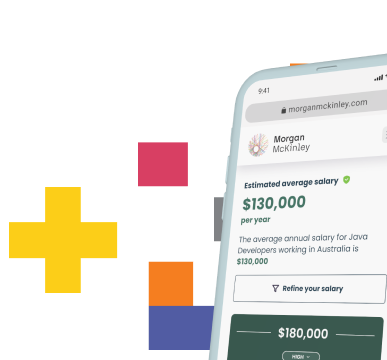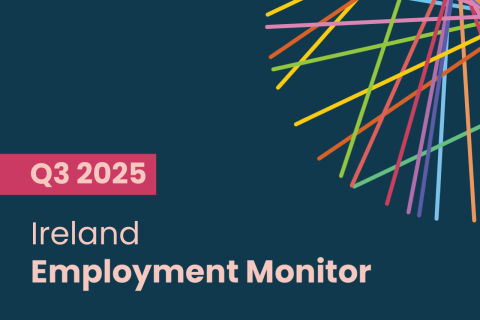Why Learning Cultures Outperform: Lessons from Morgan McKinley’s L&D Journey

In every company that grows and lasts, learning is part of the job. The most forward-thinking employers have realised that the real driver of performance isn’t just hiring great people; it’s helping them keep getting better. When people develop new skills, their confidence rises, innovation occurs more quickly, and teams remain more cohesive.
But here’s the thing: learning and development (L&D) only works when it’s more than a series of courses. It has to feel connected to what people actually do. That’s where Morgan McKinley’s story comes in as a live example of what happens when L&D becomes part of the organisation’s DNA rather than a standalone function.
Learning That Feeds the Business
At Morgan McKinley, learning is treated as a strategic lever, not an afterthought. The company recently moved to Cornerstone, the learning management system designed for skills-based learning.
“It’s an evolution for our business, and we’re very much moving in that direction,” -Michele Holly, Global Technical Training Manager, Morgan McKinley.
The team keeps things simple: anyone can request training, whether it’s an individual, a manager, or a team. When patterns emerge, with multiple people requesting similar support, the L&D team conducts a broader session. “We’re a very accessible team,” Michele adds. “If there’s demand, we open it up to the business.”
That responsiveness is part of what makes their approach work. L&D also has a seat at the table when new business initiatives are planned. This means learning is aligned with strategic goals from the start, not added as a fix later.
Learning that sits at the table
L&D is not a side project here. “L&D has a seat at the table, so we are brought in early to provide guidance, messaging, and training approaches when anything new is going out to the business.” That early involvement changes the quality of execution. It means learning is not an afterthought. It is part of how strategies become actions and how actions become results.
The approach is practical.
Identify the need, shape the learning, release it in formats people can actually use, then measure what changes.
Sometimes, that is a coaching session for managers. Sometimes it is a short virtual workshop. Sometimes it is a self-serve pathway. The point is to match the rhythm of the business.
Make it personal, make it stick
A good example is the “12 Days of Learning.” It focused on personal growth rather than job-specific tasks, and the engagement stuck. People kept returning to the content well after the campaign ended. In Michele’s words, it was “a very successful campaign with lasting content engagement on the platform.”
Why did it land? The topics were real, the format was light, and the ask on time was reasonable. This is one of the quiet truths of upskilling: most people want to grow; they just do not want learning to fight their day job. “Understand your audience,” Michele says. “How much time do they have, and what medium works for them? Leadership involvement and backing will ensure greater success.”
Culture you can feel
You cannot fake a learning culture. People know if development is a poster on a wall or a practice in the room. Here, the signals are consistent. New joiners get structured support. Leaders get frameworks, coaching, and shared language. Tenured teams have access to ongoing sessions that meet real needs. The feedback loop matters too: insight flows from consultants to managers to L&D and back again, which keeps content current and grounded.
Recognition has followed. In 2024, Morgan McKinley received the Best Talent Development Initiative award from the Learning & Development Institute for its Recruitment Onboarding Programme. The company was also a finalist for the Best Learning & Development Organisation award in both 2024 and 2025. While awards are not the primary goal, they reflect a commitment to developing talent, something that both customers and candidates can appreciate in a company that invests in its people.
What employers can learn from this
Let’s break it down. If you are an employer looking to make learning work, a few patterns stand out:
- Put L&D in the room early. Strategy first, training second. When L&D helps shape the rollout, adoption improves and confusion drops.
- Keep the front door open. Invite requests from anyone, then scale what repeats. You discover real demand faster that way.
- Mix the formats. Short virtual sessions, self-paced modules, quick reference guides, and peer conversations. Different moments need different modes.
- Tie learning to moments that matter. New tools, new products, new processes, new hires. These are the windows where learning changes behaviour.
- Back it from the top. Support from leadership is a force multiplier. Without it, engagement becomes pockets of enthusiasm. With it, culture shifts.
None of this requires a blockbuster budget. It requires clarity about what people need and consistency in how you meet it.
The power of small wins
The most convincing evidence isn’t a slogan. It is the pattern of small wins you can see on the ground. A manager who handles a feedback conversation better than last quarter. A recruiter who closes time to productivity because the playbook is clear. A team that shares what works in plain English, not in acronyms.
When those wins stack, retention improves, mobility opens up, and internal capability grows. Hiring and onboarding benefit too. Candidates can sense when a company takes development seriously, and new joiners settle faster when the path is visible.
Skills, not just courses
The shift to Cornerstone signals a broader point: development is moving from courses to skills. That lets the business map what it has, what it needs, and where to focus. It also gives individuals agency. People can see the skills behind the role they want and pick learning that actually moves them there.
This is where data helps. Not vanity metrics, but meaningful signals like adoption, progression, time to productivity, and engagement with targeted content. When those signals are shared with leaders, you get better decisions about where to double down and where to change tack.
Stories that stay with you
Every L&D team has stories. The best ones are simple and human. Someone learned something, tried it, and the work got better. The “12 Days of Learning” is one of those. So is the steady drumbeat of our recruitment skills training programme, where learners build confidence in the core steps of their job, one focused session at a time. These stories travel. They make learning feel less like policy and more like progress.
What’s next
The direction is clear: keep building towards skills-based learning, keep partnering early with the business, and keep the experience simple and useful. The philosophy is unchanged. Equip people to do great work today, give them the skills to grow into tomorrow, and make learning a habit rather than an event. Upskilling is no longer just about employee satisfaction; it’s a business growth strategy. Organisations that make learning part of their everyday rhythm build resilience. They’re faster to adapt, quicker to innovate, and better at keeping good people.
Morgan McKinley’s journey proves the point: when people feel equipped to grow, they deliver more than results and they deliver progress.














